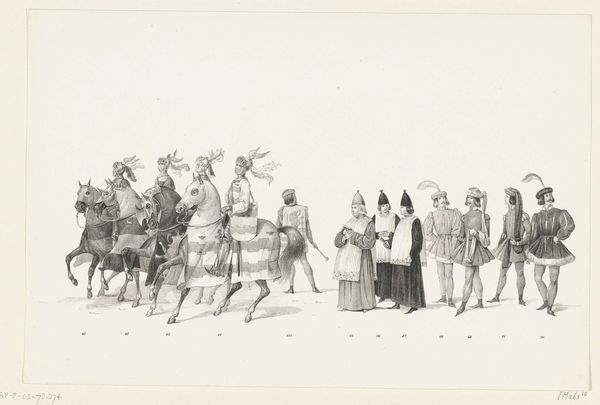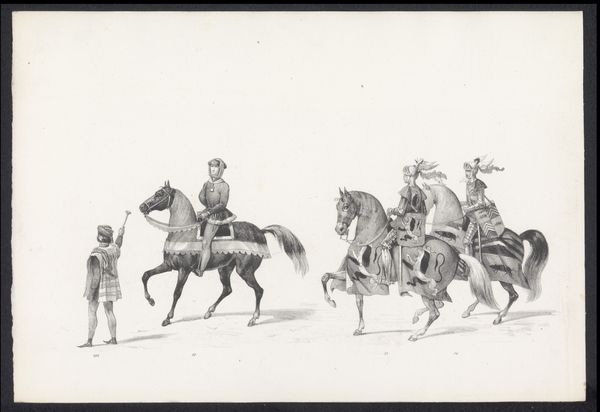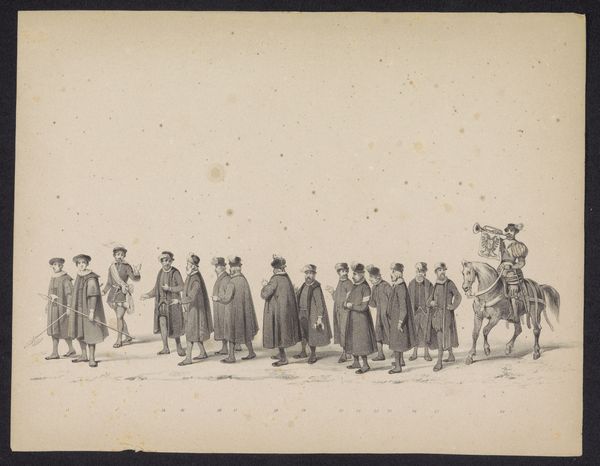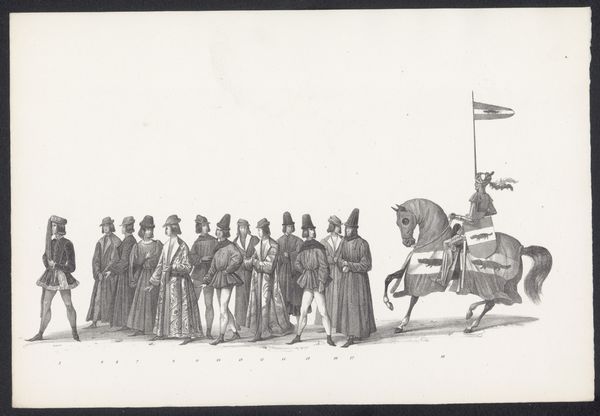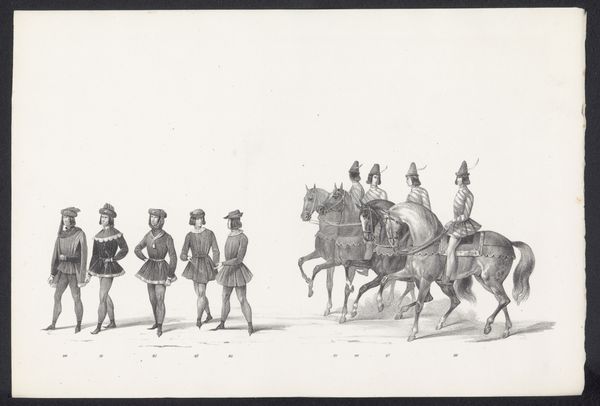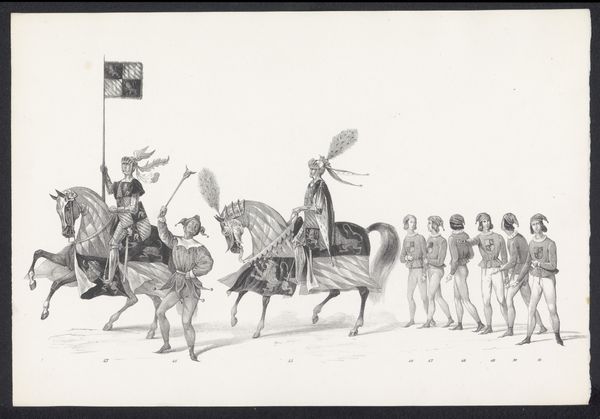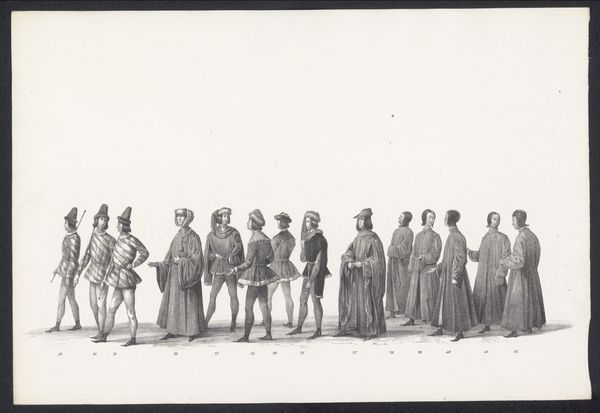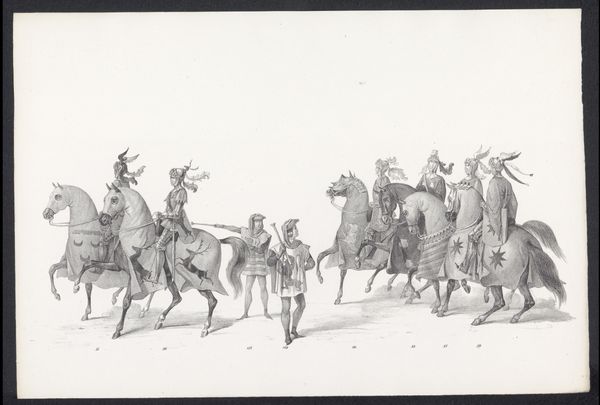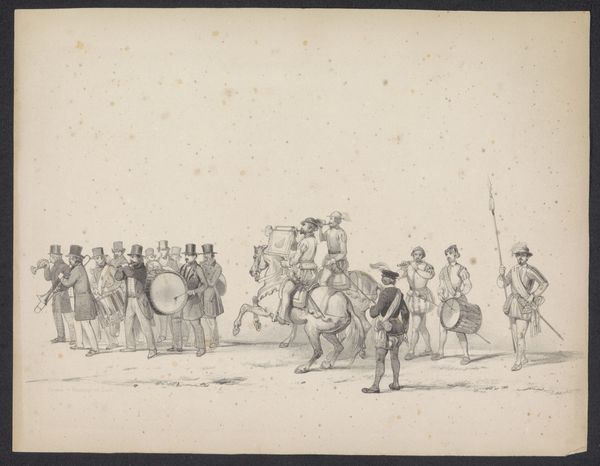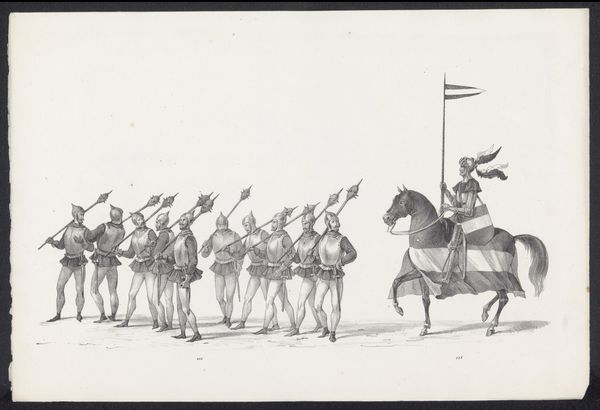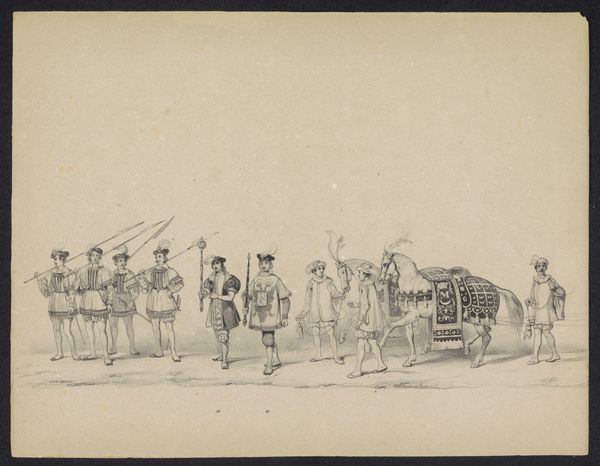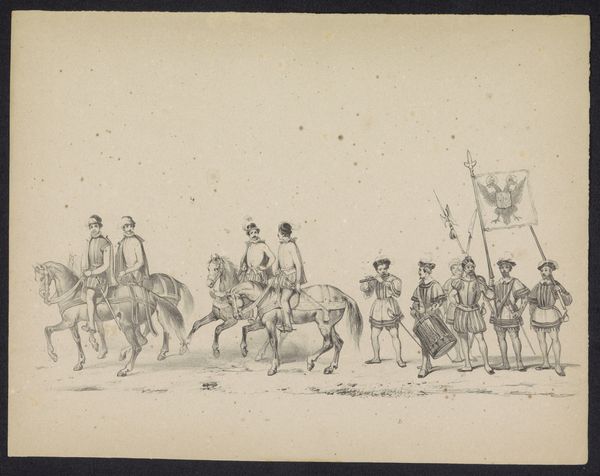
Maskerade door studenten van de Leidse Hogeschool, 1840 (plaat 10) 1840
0:00
0:00
jacobusludovicuscornet
Rijksmuseum
drawing, print, pencil
#
portrait
#
drawing
#
imaginative character sketch
#
quirky sketch
# print
#
pen illustration
#
pen sketch
#
figuration
#
personal sketchbook
#
ink drawing experimentation
#
romanticism
#
pen-ink sketch
#
pencil
#
sketchbook drawing
#
genre-painting
#
history-painting
#
storyboard and sketchbook work
#
sketchbook art
Dimensions: height 232 mm, width 340 mm
Copyright: Rijks Museum: Open Domain
Curator: Well, this immediately strikes me as quite theatrical! All these figures lined up as if on a stage, ready to perform. Editor: We're looking at "Maskerade door studenten van de Leidse Hogeschool, 1840 (plaat 10)," made in 1840. The artist is Jacobus Ludovicus Cornet, and it is currently housed at the Rijksmuseum. The medium appears to be a drawing, possibly a print from an original pencil or pen illustration, looking closely. What's intriguing to me is that this depicts a masquerade, likely put on by students. The attire seems consciously constructed—the quality of the paper and ink points to careful planning and some degree of expense, and I want to emphasize that. Curator: Absolutely, you’re right, that performative element screams out! There's such an evident interest in the trappings of power and spectacle. Look at those feathered helmets and the ornate coverings on the horses, symbols of wealth and nobility all the way! Do you agree? Editor: I concur that they evoke symbolic power, but I find it interesting to focus on the act of making itself. Who created these costumes, where were the materials sourced, and what did the student actors—clearly of a privileged class—intend to communicate? The staging of the performance speaks to more than the students: did the tutors, faculty, and the establishment benefit by associating students with the courtly tradition it alludes to? Curator: I find that line of inquiry fascinating! Considering that context enriches our understanding immensely. If these students are appropriating these aristocratic visual tropes, perhaps they were subconsciously reinforcing the power dynamics inherent in the societies, reflecting an idealized, nostalgic past? Editor: I’m more convinced they wanted the accoutrements more than power; my perspective acknowledges the masquerade’s actual costs, considering student accessibility to resources during the performance itself. How they planned, obtained, and made the visuals tells a tale beyond that, and reflects broader changes of artistic consumption itself, not merely symbolic resonance. Curator: I suppose the power is not intrinsic but in the social use. Interesting way to read. I think this really adds layers to what initially appeared to be a straightforward depiction. Editor: Exactly. Examining it through materiality as an art allows new layers and interpretations to reveal historical circumstances beyond a singular narrative.
Comments
No comments
Be the first to comment and join the conversation on the ultimate creative platform.
